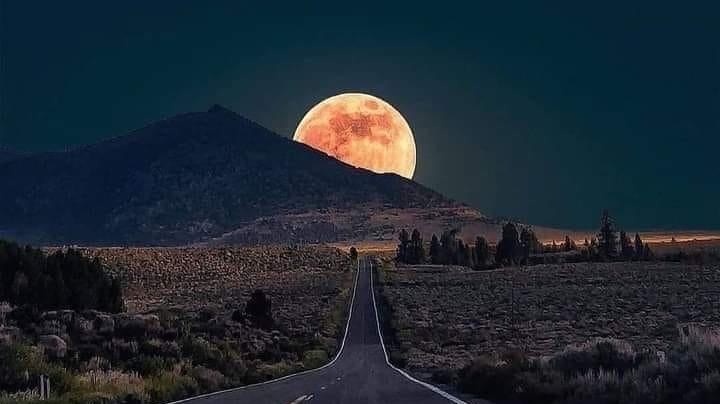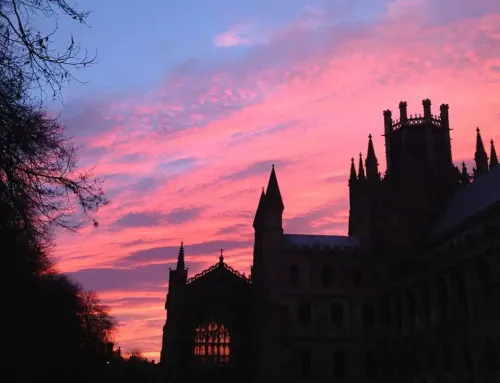He who dismisses the light, and it departs, calls it, and it obeys him trembling;
Before whom the stars at their posts shine and rejoice;
When he calls them, they answer, “Here we are!“ shining with joy for their Maker.
Such is our God; no other is to be compared to him.
Baruch 3:33-36
Donna Tartt, in her Pulitzer Prize-winning book The Goldfinch, makes a remarkable statement that perfectly encapsulates the mission of Sacred Windows:
“And isn’t the whole point of things—beautiful things—that they connect you to some larger beauty?”
Ah, that “larger beauty”. It should really be spelled with a capital B: the Trinitarian Beauty of God’s life. Without it, nothing is beautiful, nothing has purpose or meaning. All things devolve into meaningless and chaos if we lose sight of it.
The whole effort to find meaning in life, I believe, is an attempt to reconnect ourselves to that larger beauty of our Prodigal God (“prodigal” in the positive sense of “generous”) who lavishes His goodness on all He has created. This great enterprise trains us to see, to hear, and to perceive His Spirit hovering over the abyss of our world.
Speaking of creation: God’s vast universe is a good starting point for finding wonder and beauty. Most of us spend our days looking downward (so as not to trip) or outward at screens or projects (so as to earn our daily bread), but we easily ignore the vast universe upward, above us, which is probably one of the truly underappreciated realities of our modern age.
There is a special kind of beauty in the ocean of nothingness we call outer space. When you take time to consider space as a created entity, willed by God for His cosmos, the only proper reaction to it must be wonder, or possibly humility. We can hardly grasp or attempt to measure its vastness, let alone conquer it.
Unimaginable Sizes
Let’s use a few word pictures and analogies to try to get our minds around sizes and distances in space. We can start with those stars closest to us:
- The Space Shuttle flies at 17,500 mph. At that speed, it would take the Space Shuttle seven months to reach the sun. If you took a “slower” commercial airplane traveling at only 500 mph, it would take you 18 years to get there.
- The sun (a medium-sized star) is so immense that it measures almost one million miles in diameter, and as many as one million of our earths would fit into it.
- If you got on that commercial airliner again and traveled to the nearest star to the earth (Alpha Centauri), it would take you literally 5.5 million years to reach it! (Dubay, Evidential Power of Beauty, 133)
We are speaking here of humanly impossible feats: Star Trek notwithstanding, traveling that far is and always will be impossible. We can only imagine but never accomplish this kind of space travel, even if future advancements of technology were to give us the capacity of traveling at the speed of light.
Why? The distances are so immense they have to be measured in time rather than in physical terms. We speak of distances in space as light years (“year” is of course a time designation) rather than in quantifiable units like miles. One light year is the distance covered by light traveling at 186,000 mi/second – for a year.
The amount of zeroes it would take to describe those distances in physical terms is not worth publishing, and the nth-power designation is just an abstract number, so scientists use time to measure the sizes of galaxies and distances between stars and galaxies.
Galactic Distances
Speaking of which, our galaxy, the Milky Way, “measures” 100,000 light years from end to end. From the perspective of a human being whose lifespan is seventy or eighty years, this is inconceivably vast.
- The Milky Way consists of anywhere between 2 and 3 billion stars, of which our sun is just one minor player.
- The largest galaxy discovered so far is called Abell 2029; it is sixty times larger than our Milky Way and is believed to contain at least one trillion stars! (Dubay, 134) That’s not all.
- In the 1990s, the number of galaxies in our universe was believed to be about 200 billion. Due to the data gained by the Hubble Telescope, however, scientists now believe that at least two trillion galaxies make up our universe.
Are you feeling small yet?
We Live On a “Rare Earth”
The larger context of the vast universe puts things in perspective for the little round ball we know as planet earth. Earth is actually two realities which are important to keep in balance in our minds as we contemplate God’s universe: it is both a speck of dust in the enormous cosmic ocean of space and also a rare jewel of life, unique in all creation.
To appreciate this a little more, we’ll start with the big picture and gradually narrow down our scope to see how special the earth is in God’s creation.
A few years ago Discover Magazine described a computer simulation of the Big Bang by Swedish astrophysicist Erik Zackrisson, who discovered that the odds for the existence of a planet like our earth are about one in 700 quintillion! (That’s seven followed by twenty zeroes.)
His thesis is an expression of the theory known as the “Rare Earth” Theory, which holds that the planet we live on is rare, if not unique, in the entire universe. Zackrisson believes that there is only one type of planet in the universe that could meet all the criteria for sustaining life. Here are some of those conditions:
First of all, the planet and its sun have to be members of a particular type of galaxy (the spiral-shaped Milky Way) that allows for the formation of life due somehow to its constant spinning. Believe it or not, spiral-shaped galaxies are only one of three types of galaxies out there (elliptical, spiral, and irregular).
Another factor is that the planet must be in the “habitable zone” of a star (our sun) for it to have even the possibility of an atmosphere favorable to life.
The earth also gets some help from the solar system. Earth’s two giant neighbors, Jupiter and Saturn, are apparently so full of gas and have enormous gravitational forces that they keep cosmic debris like asteroids and comets from constantly raining down on us.
Other Criteria
We spoke earlier of the earth’s distance from the sun. That’s not a random factor either. The specific distance of the earth from that burning ball of nuclear fission has a lot to do with the possibility of life on this planet.
We should probably be thankful that our sun is not a wild, unpredictable hot head. It burns at just the right temperature relative to our distance from it so we all don’t just burn to a crisp (or freeze to death) on any given day. It emits the perfect amount of energy to fuel growth (photosynthesis) and facilitate reproduction in the abundance of flora and fauna that exist on this planet.
Our earth also orbits at a distance from the sun that gives it a perfect gravitational force (so we don’t all fall off) and has a continuously stable and rounded orbit, which means we have regular and predictable seasons every year. These conditions create the possibility for earth’s atmosphere to be filled with oxygen which in turn allows for the flourishing of life.
Here’s an interesting little fact about oxygen. It makes up about 21% of the earth’s atmosphere, but if it were even a slight percentage higher, the earth would be subject to uncontrollable wildfires everywhere, even in the frozen tundras. If the oxygen content were the slightest bit lower, we would all suffocate to death. (Dubay, 139)
Even the tilt of the earth and the speed of its rotation create conditions for complex life to develop without extreme fluctuations of temperature or climate upheavals (global warming naysayers notwithstanding).
Furthermore, the earth has a molten core, which creates a magnetic field around the whole planet to protect it from harmful radiation, and a large moon which affects tides and seasons creating conditions favorable to sea and animal life.
Sometimes the Rare Earth Theory is called the fine-tuning theory because the balance of all conditions for life on earth is extremely delicate. Simply put, if any one of these factors were off by even the slightest degree, all life on the face of the earth would perish overnight. (Dubay, 139)
Rare earth indeed.
Work of Art
It’s not hard to see how our little planet earth, embedded in a solar system, which is part of a galaxy, which is just one of trillions of galaxies that make up what we call the universe, is something like a miracle of nature. It doesn’t even require religious faith to come to this conclusion. It only requires eyes to see and a mind to perceive the wonder of this celestial tapestry that is displayed in the heavens for all to see.
Religious faith, however, offers us the best explanation for it all. It is divine artistry. It is miraculous. It is a gift in the deepest sense.
Fr. Dubay gets the last word:
The Artist of nature is one and the same as the Artist of super nature, and we would expect traces of who he is and how he operates in the visible universe. In the macrocosm, with its unimaginable magnitude and distances that boggle our minds, we are being treated to the splendors of his infinity in wisdom, power, and to ration.

Soul Work
It doesn’t take much to nurture wonder in the soul. If these few statistics and observations about the cosmos say anything, they tell us that a Supreme and Artistic Intelligence has created all things.
Although modern life with artificial lighting everywhere tends to reduce our perception of the night sky above us, take time the next time you are out at night to look up.
As you do, think of the vastness of the distances, measured in light. Realize that the light you are seeing in those stars tonight was actually emitted several million years ago and is only now reaching you.
You don’t have to be able to identify all the constellations or name the stars, you just have to admire their beauty and reconnect, as we said at the beginning, with a larger and more perfect Beauty that created you.
—
Source: Fr. Thomas Dubay, The Evidential Power of Beauty: Science and Theology Meet (San Francisco: Ignatius Press, 1999), 129-148.




[…] Next The Divine Prodigality of Beauty (Part 1 – […]